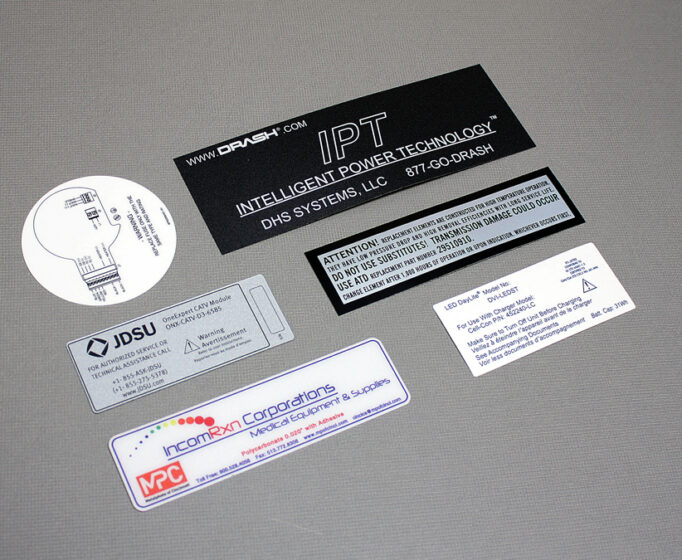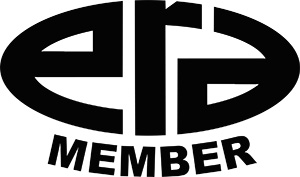Comprehending How Plastic Nameplates Job: Insights Into Their Performance and Advantages
Plastic nameplates are necessary devices for recognition and communication in numerous settings. Created from sturdy products like acrylic and PVC, they use both strength and aesthetic appeal. Various printing strategies enhance their visibility and branding potential. Recognizing their functionality reveals not only their sensible applications but also the advantages they give companies. As sectors advance, the function of plastic nameplates may change, triggering a closer check out their recurring significance and innovation.
The Products Behind Plastic Nameplates
Plastic nameplates are crafted from a selection of materials, each selected for its one-of-a-kind residential or commercial properties and suitability for different applications. Typical materials consist of acrylic, polycarbonate, and PVC, each offering distinctive advantages. Polymer is preferred for its quality and lightweight nature, making it optimal for interior use and display functions. Polycarbonate, known for its high impact resistance, is typically selected for settings where durability is important (Plastic Nameplates). PVC, on the other hand, provides a cost-efficient solution with suitable climate resistance, suitable for exterior applications.Additionally, the option of material can affect variables such as color retention, simplicity of printing, and total visual charm. This selection procedure assurances that the final product satisfies details requirements, whether for branding, identification, or ornamental objectives. Understanding the residential or commercial properties of these products assists in making informed choices when selecting plastic nameplates for numerous needs
Manufacturing Processes of Plastic Nameplates
The production procedures of plastic nameplates encompass several essential steps that assure top quality and toughness. Trick elements include material selection strategies, various printing approaches, and finishing and finish alternatives. Comprehending these components is crucial for producing effective and aesthetically pleasing nameplates.
Material Option Strategies
Picking the best materials for producing plastic nameplates is essential for guaranteeing sturdiness, aesthetic appeal, and functionality. Numerous plastic types are available, each offering special residential properties fit for various applications. Polyvinyl chloride (PVC) is popular for its cost and resistance to environmental variables, making it optimal for outside use. Acrylonitrile butadiene styrene (ABS) offers boosted effect resistance and is usually picked for its exceptional stamina and versatility. In addition, polycarbonate is favored for applications needing openness and high impact resistance. The selection process includes taking into consideration aspects such as the meant usage, ecological direct exposure, and preferred visual top qualities. Inevitably, careful product option substantially influences the efficiency and long life of plastic nameplates, providing to diverse market requirements.
Printing Approaches Overview
Material option lays the groundwork for the subsequent printing approaches used in creating plastic nameplates. Numerous techniques, such as screen printing, electronic printing, and pad printing, are utilized to attain sturdy coatings and high-quality styles. Screen printing is preferred for its ability to generate vibrant colors and appropriates for huge runs. Digital printing, on the other hand, supplies adaptability and accuracy, making it excellent for smaller sized orders with variable data or elaborate layouts. Pad printing enables for the transfer of images onto unequal surfaces, suiting complex forms. Each printing technique adds uniquely to the end product's look and longevity, ensuring that the nameplates properly communicate the intended message and hold up against environmental aspects.
Finishing and Covering Options
Ending up and finish choices play a crucial function in boosting the longevity and aesthetic charm of plastic nameplates. Numerous strategies, such as UV covering, offer a safety layer that withstands scratches and fading, considerably extending the product's life-span. In addition, laminating flooring options can provide a matte or glossy coating, permitting customization to match branding demands. Anodizing and electroplating are additionally preferred methods, adding a metal shine while improving rust resistance. These finishings not only enhance appearance yet likewise add to the nameplate's capability by safeguarding versus ecological variables. Additionally, specialized surfaces, such as anti-graffiti finishes, assurance that nameplates preserve their clarity and aesthetic allure in challenging conditions. Subsequently, the ideal finishing and layer options can greatly enhance the overall worth of plastic nameplates.
Style Choices for Customization
While exploring design alternatives for personalization, one uncovers a large variety of possibilities that can improve the useful and visual allure of plastic nameplates. Color option is a main consideration, as lively colors can bring in focus while neutral shades promote professionalism and trust. Various font style options and dimensions in addition individualize nameplates, making certain readability and alignment with brand identity.Incorporating logos or images includes a distinctive touch, strengthening business branding. Furthermore, shape customization enables distinct layouts, ranging from typical rectangular shapes to more intricate kinds, accommodating certain styles or environments.Textures such as matte or shiny coatings can likewise affect the general look, supplying a tactile dimension. Additionally, the assimilation of attractive aspects like histories or boundaries boosts aesthetic passion. These modification alternatives collectively enable companies to produce plastic nameplates that efficiently interact their identification and message while fulfilling useful requirements.

Resilience and Durability of Plastic Nameplates
Several factors affect the durability of plastic nameplates, the choice of material and manufacturing processes plays a substantial role in their durability. Top quality plastics, such as polycarbonate and acrylic, are usually picked for their fundamental resistance to effect, weather, and UV radiation. These products can endure severe ecological conditions without substantial destruction, ensuring that nameplates stay undamaged over time.Furthermore, advanced production techniques, such as injection molding and laser engraving, add to the effectiveness of plastic nameplates. These procedures create specific and resilient inscriptions that resist fading and wear. In addition, safety coatings may be applied to enhance resistance to chemicals and scratches, even more extending their lifespan.Ultimately, the combination of quality materials and efficient manufacturing procedures guarantees that plastic nameplates preserve their functionality and look for years, making them a trustworthy selection for different applications.
Applications Throughout Different Industries
Plastic nameplates offer a selection of important functions across various industries. They are frequently made use of for commercial equipment recognition, guaranteeing clear labeling for safety and operational efficiency. Additionally, they offer reliable office signage solutions and play an essential role in safety and security and compliance markings, highlighting their flexibility and relevance in diverse environments.
Industrial Equipment Identification
Effective industrial equipment recognition is crucial throughout numerous sectors, as it assures safety and security, performance, and conformity with governing standards. Plastic article nameplates act as an important tool in this procedure, giving resilient and clear recognition for machinery and devices. Industries such as manufacturing, building and construction, and energy utilize these nameplates to show critical information, including operating instructions, risk cautions, and upkeep routines. Their strength to severe environments guarantees that essential information stays available, decreasing the risk of mishaps and operational downtime. Additionally, personalized attributes enable for branding and specific identifying demands, making plastic nameplates flexible across applications. Generally, efficient devices identification via plastic nameplates fosters a more secure workplace while improving productivity in diverse industrial settings.
Workplace Signs Solutions

In various markets, the value of clear interaction extends beyond industrial equipment to office atmospheres where signage plays an essential role. Plastic nameplates act as efficient office signs options, giving crucial information such as worker names, job titles, and department classifications. These nameplates improve professionalism and trust and promote a welcoming environment, aiding both team and visitors in maneuvering the work space. In addition, they offer customization options, allowing organizations to line up signage with branding and aesthetic preferences. In settings like healthcare facilities, academic organizations, and business workplaces, durable and clear signs assurances effective communication and adds to organizational performance. Inevitably, using plastic nameplates in workplace environments not just boosts clearness however also promotes a natural and orderly office.
Safety And Security and Conformity Markings
While lots of businesses prioritize aesthetics and branding in their compliance, signage and safety and security markings are just as important throughout different markets. These markings act as important tools for interaction, assuring that workers and customers know possible risks, security procedures, and regulatory needs. In manufacturing, for example, plastic nameplates typically show alerting tags and use directions to alleviate dangers. In health care, conformity signs notifies employees about hygiene techniques and tools usage, thereby advertising a secure setting. In addition, the sturdiness of plastic nameplates makes them suitable for numerous setups, withstanding damage from environmental factors. Overall, security and conformity markings enhance operational effectiveness, promote health, and assurance adherence to industry criteria, making them essential in contemporary work environments.
Advantages of Making Use Of Plastic Nameplates
Countless advantages make plastic nameplates an enticing selection for companies and businesses. One key advantage is their sturdiness; plastic nameplates are immune to fading, moisture, and various environmental aspects, making certain durability in varied setups. In addition, they are light-weight, making them simple to transfer and set up as needed.Cost-effectiveness is an additional significant benefit. Plastic nameplates normally need lower manufacturing costs contrasted to metal or timber options, allowing organizations to preserve budget plans while accomplishing specialist branding. Their versatility additionally stands apart, as they can be customized in numerous shapes, Go Here sizes, and shades to match branding requirements.Furthermore, plastic nameplates can be conveniently printed with high-resolution layouts, advertising clear visibility and efficient interaction. Lastly, they are typically made from recyclable products, aligning with eco aware techniques. These combined advantages boost the performance and allure of plastic nameplates for a variety of applications in different markets.

Tips for Picking the Right Nameplate for Your Requirements
Selecting the right nameplate can greatly enhance an organization's branding and communication efforts. To make an educated decision, one need to initially consider the material. Plastic nameplates provide resilience and convenience, making them excellent for numerous atmospheres. Next off, evaluate the style aspects, consisting of size, shade, and font style, guaranteeing they straighten with the organization's branding guidelines.Additionally, it is essential to analyze the designated use the nameplate. For instance, if it requires to hold up against outside conditions, imp source picking UV-resistant options is advisable. Customization is an additional vital aspect; customized nameplates can show originality and professionalism.Lastly, spending plan considerations need to not be overlooked. Contrasting rates throughout different vendors while considering quality will assist in locating an appropriate service. By taking these components right into account, companies can choose a nameplate that efficiently communicates their identity and objective.
Frequently Asked Questions
Can Plastic Nameplates Be Recycled After Use?
Plastic nameplates can be recycled, depending on the sort of plastic utilized and local recycling facilities. Proper disposal and recycling techniques contribute to environmental sustainability, encouraging the reduction of plastic waste in garbage dumps.
Just how Do I Tidy and Maintain My Plastic Nameplate?

Are Plastic Nameplates Waterproof or Water-Resistant?
Plastic nameplates commonly display water-resistant buildings, protecting them from small dampness exposure. Long term submersion or severe problems might compromise their honesty. Customers need to take into consideration details products and finishings for improved water-proof capabilities when selecting nameplates
What Is the Typical Lifespan of a Plastic Nameplate?
The typical life expectancy of a plastic nameplate typically ranges from five to 10 years, depending upon elements such as environmental direct exposure, material top quality, and maintenance. Routine care can prolong its functionality and appearance significantly.
Can I Order a Nameplate in a Specific Shape?
Personalized shape options for nameplates are typically readily available with numerous producers. Customers can request certain designs, ensuring that the nameplate satisfies their visual and practical demands while maintaining resilience and high quality throughout its lifespan. Product selection lays the groundwork for the subsequent printing approaches used in generating plastic nameplates. Lots of aspects affect the durability of plastic nameplates, the option of material and manufacturing procedures plays a considerable duty in their durability. These materials can withstand rough ecological conditions without considerable degradation, guaranteeing that nameplates continue to be intact over time.Furthermore, advanced production strategies, such as shot molding and laser inscription, contribute to the robustness of plastic nameplates. Plastic nameplates can be reused, depending on the type of plastic made use of and regional recycling centers. The average life-span of a plastic nameplate typically ranges from five to ten years, depending on elements such as environmental exposure, material high quality, and maintenance.